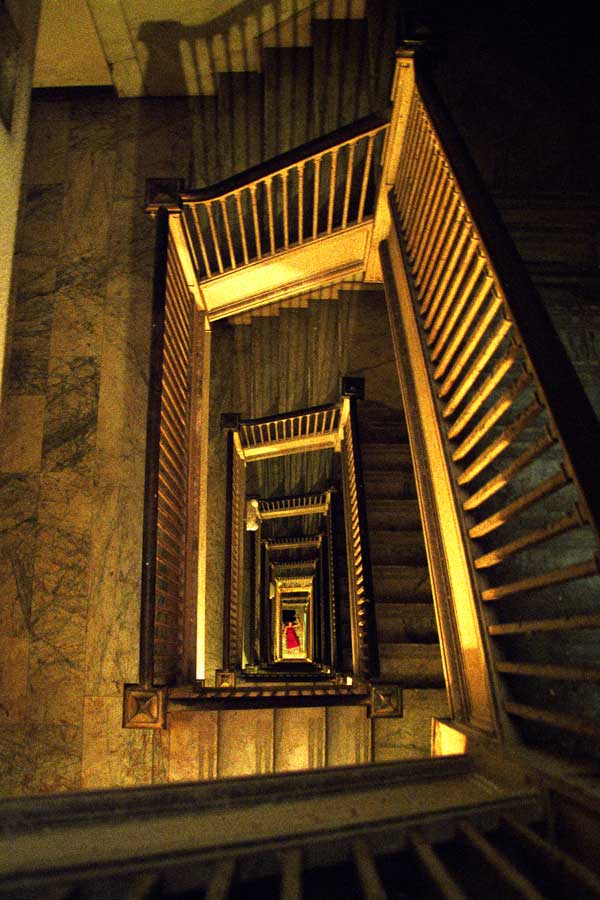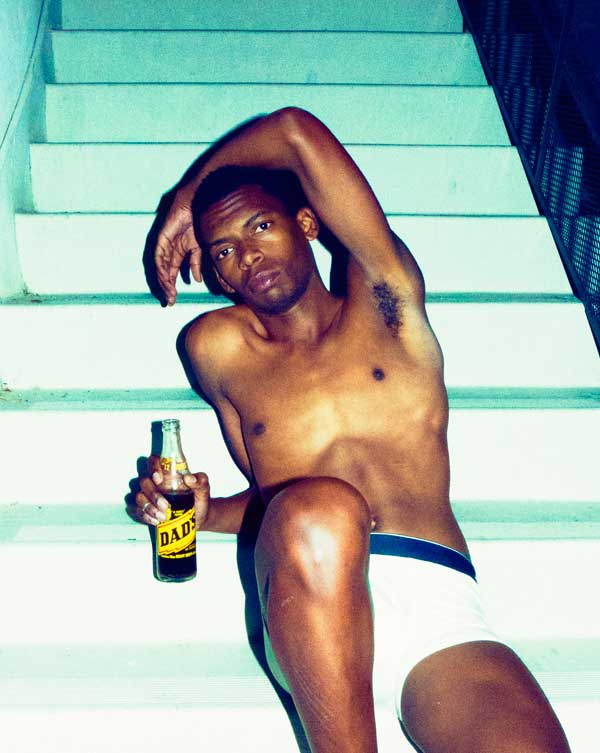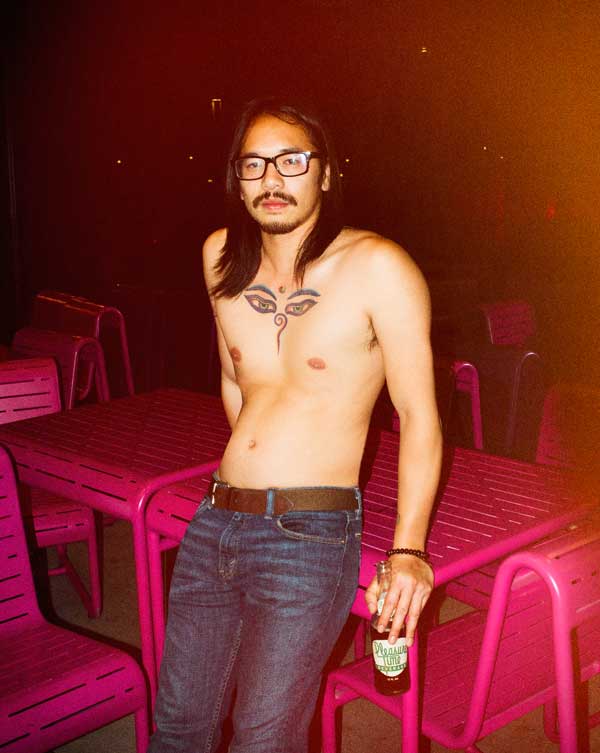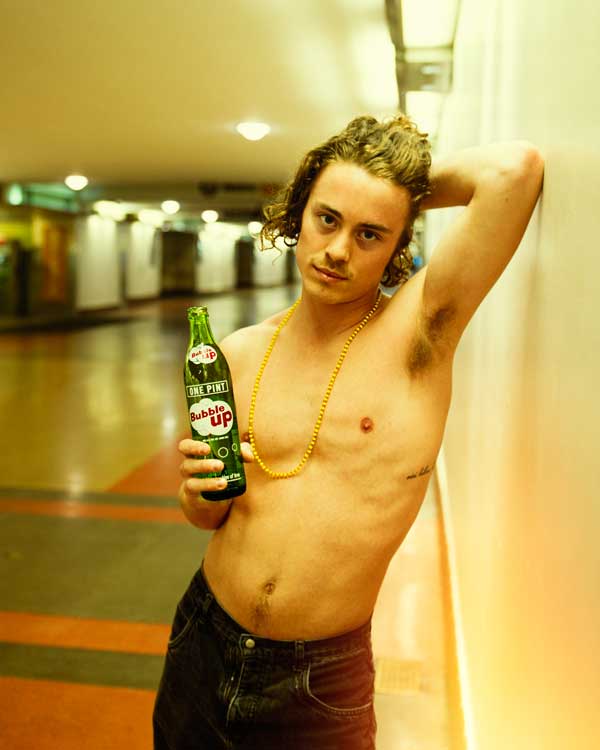Melanie Pullen invites me into her sunny apartment as she cleans up from a party the night before, “This is why I left New York!” she says, gesturing to full-length windows with a sweeping view of Koreatown. “All this room!”
Pullen’s enthusiasm for Los Angeles is apt, given that her photography consists of cinematic explorations of beauty, crime and the city’s history—she is perhaps best known for her “High Fashion Crime Scenes,” which recreate glamorized versions of real murders and suicides. Some of the shots were published as a book by Nazraeli Press in 2005; all based on real crime photos. Pullen acquired the murder scenes through an immense amount of research with the help of the Chief of the LA County Coroner’s office and former LA Chief of Police William Bratton, who had just stepped down from his position as Commissioner of NYPD. Both of these men gave her access to records that were not easily found otherwise.
“News coverage is a circus!” she tells me as we sit sprawled on her living room floor. Pullen is warm, friendly, and seems like the sort of person who can sit and talk with anyone. “I’m taking these real, horrific scenes and playing them up like we do in the news. Back to the days of the Black Dahlia, there’s always been this fascination of wealth, or perfection, or beauty. The fashion and the models I use are playing with that—diminishing the value of the crime. It’s all about playing it down, dumbing it down.”
Pullen began making Super 8 films while growing up in New York, and was drawn to photography through her love of cinema—she has had no formal photography training, and is entirely self-taught. “I noticed I wasn’t very good at it,” she says of her early films. “I studied the difference between my own crazy films and great films. I looked at Kubrick and the French New Wave, and realized if you freeze a frame, the shots are composed so beautifully. I grew up around photography and always loved it, but didn’t know what I would do with it. There was a moment when I realized if I could master this, I could master an art film one day, or use cinematic qualities to do the narrative of film in a picture.”

Melanie Pullen, Stairs, 2004
The High Fashion Crime Scenes are just one of Pullen’s thematically linked series—the artist seems to work best when she captures a concept in multiple instances. The crime scenes are more recently joined by the “Soda Pop Boys” series, which are created with a very specific set of rules: Pullen leaves her apartment between midnight and 3 a.m. where she goes to neighborhoods known for male prostitution and other “outliers of society.” She solicits men to take off their shirts for $20, has them select one of many vintage soda bottles, then speaks with them intimately for an hour or two while she shoots them. This series is based on a personal re-creation of a moment in her childhood.

Melanie Pullen, Soda Pop #1, (Dad’s So-da-licious), 2015.
“I grew up in West Greenwich Village during the early ’80s,” she begins to tell me. “My bedroom window was a second-story window that looked out onto Washington and Christopher Street, [somewhat] analogous to what the entirety of West Hollywood is to LA—one of the most flourishing LGBT communities in America.” Pullen continues, “Late at night, as an eight-year-old girl suffering from intense insomnia (which I’ve had all my life), I would stare out my bedroom window and every night at about 1 a.m., like clockwork, a virtual Zeus, a seven-foot-tall, bare-chested Nigerian man—wearing no more than a little golden speedo—would show up right below me on the corner of my street. He would flip his head under my streetlight and put on a long ratty bleached blond wig. I inevitably became friends with him; we spoke almost nightly for a year or so… He would stand on the corner and turn tricks for $20 every night. Then, one day, he vanished.”

Melanie Pullen, Soda Pop #5, (Pleasure Time! So-da-licious), 2015
The memory plagued Pullen later in life, when she once again found herself in the throes of insomnia. Then she came up with the idea for the soda pop series: she began collecting vintage soda bottles from around the world. “I found many of the names to be highly sexualized and the adverts to be equally so,” she says. Indeed! A few examples of the brand names: Pleasure Time, Bubble Up, Treat-A. “I chose to combine these concepts, as both ideas had to do with childhood and my sleepless nights surrounding it, almost like my own strange fairy tale.” The portraits were recently shown in San Francisco, accompanied with plaques featuring each subject’s story.

Melanie Pullen, Soda Pop #2, (Bubble Up So-da-licious), 2015.
Pullen created another well-known series of photos that explore the uniformed, performative nature of war photography, titled “Violent Times.” The shots are life-sized portraits of (recreated) soldiers from historic wars. What seems notable in each is that the soldiers are dressed to the nines, demonstrating the ceremonial aspect of dressing for death. “I started seeing these uniforms and outfits and realized there’s a ceremony to glamorizing a killer, or if they’re defending the country. They’re creating this heroic persona through dress. Even the Nazi uniforms were designed by Hugo Boss. With all of that, there’s the ceremonial side, and it shows up too when you know you’re going to die —dress and death.”
I mention that this seems to be in dialogue with the polished look of the women in the High Fashion Crime Scenes, and Pullen agrees: “I’m sure somebody’s done some study on it, and if they haven’t, they should—the people in the [real crime] photos I came across were dressed in their nicest clothes. People when they know they’re going to die, often do a ceremonial dressing or make an effort of beauty. With suicide, it was interesting because people would often wear their uniforms, or women would dress in a pretty dress with an art effect; men would wear suits.”

Melanie Pullen, Soldier #5, U.S. Artillery (Soldier-Series), 2008
There is a textural relationship between the two series. While the war photos seem to be only about fashion, with the violence completely removed from the frame, the crime scenes are more explicitly violent. The choice to leave out the violence associated with war was a conscious one, Pullen says: “The series is about the taking on of man’s most violent acts and extracting the emotion, showing man’s ultimate vanity. It’s entirely about the ultimate glamorization of violence but in a highly desensitized manner. This work also touches upon one’s last moments and the vanity that is portrayed.”
Pullen’s career took off with her High Fashion Crime Scenes series, shown at the now-infamous Ace Gallery in Los Angeles in 2005. I inquired how that is going and if she is still represented by Douglas Chrismas, the gallery’s owner. “Over the years, Douglas had sold a lot of my work, which I was paid for—or so I thought. I wasn’t always paid on time but I received, for many years, nice big checks for my sold work. Then it came to my attention earlier this year that Douglas had filed for bankruptcy, and I found out pretty soon after that bombshell that he had hid from me that he had sold more than 20 of my large-scale artworks—over the course of about 10 years—and didn’t pay me. The majority of the sold pieces went to two major collectors, who chose to keep the artwork stored at Ace (which made matters more confusing). This all began to come to light earlier this year and I became one of the larger art creditors in the court filings with so many pieces that had been sold unbeknownst to me.
“Douglas Chrismas was the backbone of the curatorial portion of Ace Gallery and he did have an amazing eye for art and artists, as the history books prove. There’s no court-appointed person, or random Joe off the street that can replace a legendary curatorial eye,” she insists, alluding to the gallery’s subsequent takeover by a court-appointed trustee and assisting team. “I do have to say that despite the downfall of Douglas’ Ace we all had a slight hint of fun dancing with the Devil,” she adds slyly.
See Melanie Pullen performance of “Violent Times” (re-creations of her war scenes which are a cinematic glamorization of violence) at LA Art Show in DTLA Convention Center, January 12–15, 2017. Pullen will create a limited-edition work based on this performance; each piece will be entirely unique and will be available to the public at the LA Art Show.


